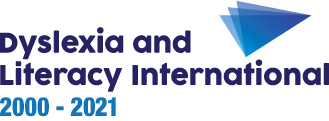Adapting your teaching to the child’s needs

All children are different, and each child will present specific learning needs which you should address to the best of your ability.
We have seen how our eyes, ears, touch, smell and taste are all channels for learning. Some children may heavily rely on one channel.
For example, the ‘visual’ dyslexic encodes, treats and recalls images, colours, and layout:

In contrast, the ‘auditory’ dyslexic remembers better if he or she hears what is to be learnt.

Dr Gavin Reid, a specialist in the area of learning styles, states that we all have our own learning styles and preferences, and knowing what they are makes our learning more efficient.
Referring back to the examples just given, for the children having difficulty in treating auditory information you can offset the weakness by use of the visual modality, using for example, videos and pictures.
Learning styles are linked to a number of factors which influence learning. One important factor is cognition, that is to say the way in which one thinks in relation to the way one learns and processes information. Broadly, there are two contrasting styles: the global and the analytic.
Analytic learners prefer working on small amounts of structured information. Often these are the ‘auditory’ learners, who have the ability to absorb details. These learners will be helped if the information is in a hierarchy of titles and subtitles.
On the other hand, the global learners often favour the visual modality and tend to see information in its entirety before seeing the details. When they read a story, these learners will be helped if given information around the subject before starting to read. These children will be helped with mind-mapping cards which give information in a global rather than linear form of presentation.
Gavin Reid makes it clear that a setback can result from a disparity between the style of teaching and failure in the style of learning. If the work is presented in a format which corresponds to the learning style of the pupil, he or she will be able to deal with any challenges.
Every effort should be made to organize the class and lessons so that teaching can be modified to meet a number of styles. In addition, teachers should be aware of what their pupils’ learning styles are.
To this end, observations and discussions with the children as they do their work are useful.
It is important that children with dyslexia are aware of their learning styles because this is the first stage, and the most important, on the way to achieving a degree of autonomy and efficiency in their learning.
To help children finding their learning style, you might consider using an exercise for multisensory memorization, such as the one suggested by Tony Buzan and Christine Carter (see above). This allows the children to identify which sense or senses best help them in remembering and visualizing.
To know more about this we advise you look at the books by Gavin Reid found on his website.


